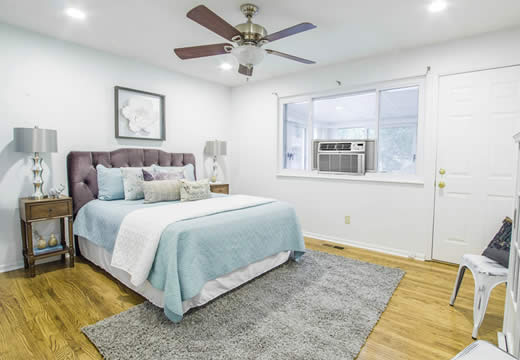Ventless Air Conditioners
It's possible you have heard some cooling appliances referred to as ventless air conditioners and you wondered what what they looked like and how they worked.
There is actually no great mystery here, as there are a number of coolers that don't require a vent or duct to carry away the hot, moist air that is produced by the refrigeration process.
The most commonly known about kind are the window air conditioners, which I will cover first. However, they're not the only kind, as you will discover a little later on!
Window Air Conditioners
 Commonly seen installed in the many windows of apartment blocks and in many homes too, window air conditioning units are very popular in situations where larger central air systems are not installed for one reason or another.
Commonly seen installed in the many windows of apartment blocks and in many homes too, window air conditioning units are very popular in situations where larger central air systems are not installed for one reason or another.
These self-contained cooling units are truly ventless or hoseless air conditioners. That's because they are already fixed to an outside wall through a window and can vent the hot air directly out the back of the unit facing the street!
Pros of Window AC
Window AC units have some advantages in that they are generally affordable to buy and easy to install.
All you need is a suitable window opening and with a supplied installation frame, they can be attached to the base of the window opening.
Cons of Window AC
The disadvantage is that they take up a portion of the window space and reduce the amount of natural light entering the room.
Also, some building have regulations that prevent the installation of window AC units.
Mini-Split Air Conditioners
I will mention the other common type of air conditioner that may appear to have no venting system, which is the mini-split AC units that have their condenser and refrigeration unit located inside a room, usually high up on an external wall.
These units are not really without a venting system, as they vent to an external compressor unit located outside the house via ducting that is usually hidden behind the internal unit and exits through the wall.
Evaporative Coolers
A very different type of cooling appliance that is also truly ventless is the evaporative cooler, or swamp cooler as they are often known.
These coolers do not employ a refrigeration process to produce cold air. As such, there is no hot air produced and so there is no need of a physical vent duct or hose to carry any hot air out of the building.
Swamp coolers use a very simple principle, which is the evaporation of water to create chilled air. This is done by soaking a porous membrane or media and forcing air through it with a powerful fan.
Cooling by Evaporation
The wet media is held in a frame vertically to allow the maximum amount of air to pass through it. As the air passes through the wet media, it evaporates rapidly, cooling the air in a very similar way that your skin is cooled by perspiration as a breeze passes across it.
These coolers are also very economical, because there is no compressor to run, just a fan, the electricity consumption is typically around 100-200 watts. When compared to the 1,000-2,000 watts consumed by a typical portable air conditioner, it is quit obvious how much you can save by running evaporative coolers instead of air conditioning.
Humidity
There is a major disadvantage that prevents many people from enjoying the cheap cool air these produce. That is they do not work well in humid conditions.
When the air is humid, it already hold a large quantity of moisture as water vapor. When air is so saturated, it will not absorb more moisture and so evaporative coolers lose their effectiveness.
To be able to enjoy the benefits of evaporative cooling, you really need to live in an area with a very dry climate, such as a desert or semi-desert location.
Conclusion
If you live in a dry climate, you can happily go and buy an evaporative cooler and enjoy the benefits of low cost cooling wherever you need it because these appliances are generally portable, on wheels.
If you live in a humid climate, you should not try to use a swamp cooler to keep you cool in hot weather, because you are highly likely to be disappointed. In such a case, if you want a truly ventless air conditioner, you will need to choose a window AC unit to keep you cool.
If building regulations prevent the installation of window AC units, your options become fewer.
You will either need to install more expensive mini-split AC or go for a portable air conditioner. The latter will need to be vented through a flexible hose connected from the unit to a window via a fixing kit that is generally supplied with the unit.
[Back to TOP]